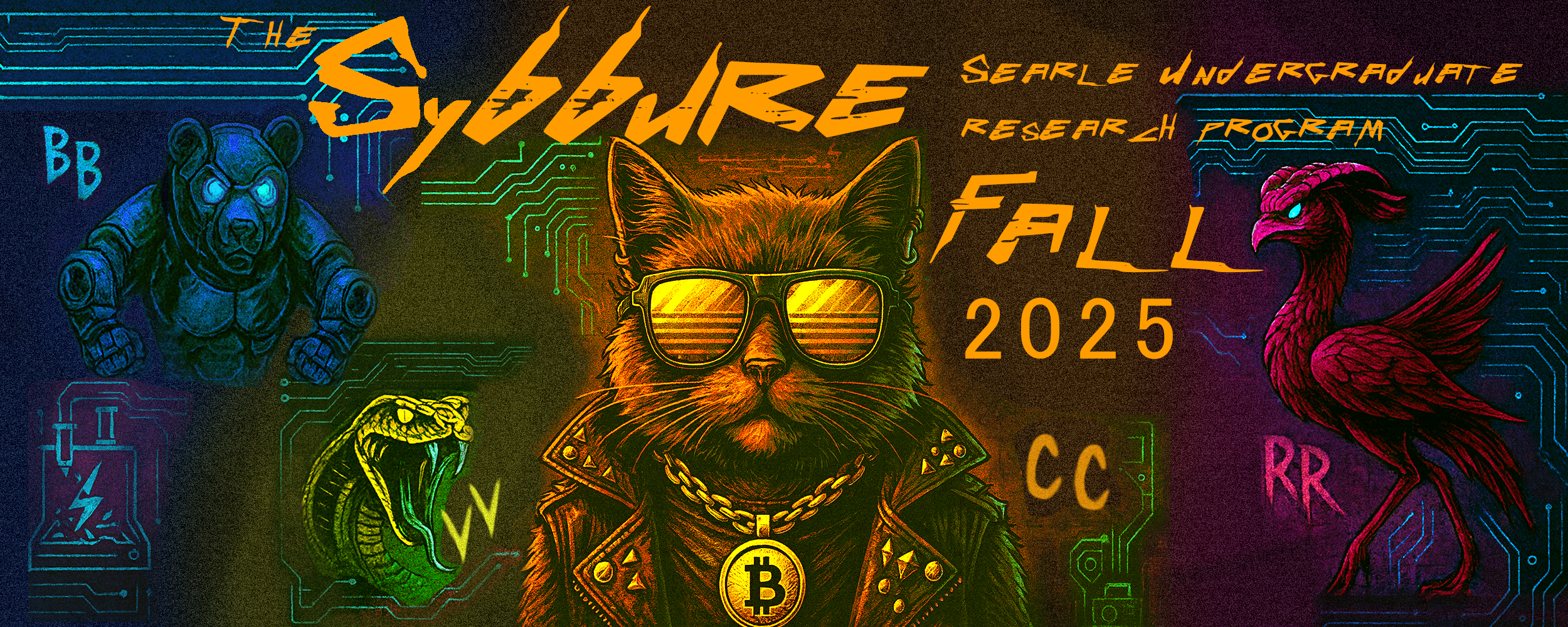
Vigilante Innovation
Vigilante Innovation (VIX) is a team-based, student-driven design project through which students can take matters into their own hands, imagining and implementing innovations to improve the world.
Quick Links:
Semester Specific Links:
Finalize team, project, and meeting time – Due Monday September 15 at noon (everyone must be in a team of 2-4 people)
Upload Project Mockup here – Due Monday September 29 at noon
Upload Project Roadmap here – Due Monday October 13 at noon
Upload Midway Update Presentation here – Due Monday October 27 at noon
Upload Final Presentation here – Due Monday December 1 at noon
Who participates in VIX? What are the expectations?
Research fellows (whether paid by SyBBURE or another source, or doing research for credit) MUST participate in the vigilante innovation research and design project. SyBBURE members (not doing research but still in subgroup and have access to resources) may choose to opt in or out each semester. If a member opts in, they will be evaluated based on their participation and performance for that semester (don’t abandon your VIX team).
Anyone participating in VIX is expected to dedicate a minimum of one hour/week during the fall and spring semesters, and a minimum of three hours/week during the summer. Ideally, the entire team can meet for that amount of time, but if scheduling is an issue then it is acceptable to meet in pairs or split up the hourly commitment over multiple meetings (eg, having two 1.5hr meetings instead of one 3hr meeting over the summer).
You are also expected to regularly update team SyBBURE and other students on your progress by submitting assignments on time (such as mockups and roadmaps), regularly communicating on slack, and giving in-person presentations and demos.
If you are participating in Senior Design, you may choose to opt out of VIX to focus on your capstone project.
VIX Overview
VIX is the design component of SyBBURE where students group themselves into teams and find a problem or interest to work on for the semester. There are many ways to grow during a VIX project, from learning new skills to becoming a better teammate and it’s helpful to think about what you want to get out of the experience at the beginning. Having students lead the problem formation and direction of the solution is a challenge unique to VIX, and the potential paths are nearly infinite. There is a VIX Website that has all of the resources that we have developed to help you along your path.
The major components of VIX include forming a team, creating a roadmap, tracking and sharing progress (through tvixtoks, a VIX notebook, slack updates…), and presenting the final result at the showcase! These components follow the design process outlined in the section below.
The Design Process
Explore Interests & Form Teams: The dynamics of your team will have a great impact on your VIX experience. Ideally you want to be with peers that are interested in the same general idea as you (though perhaps for different reasons) so that everyone is motivated to contribute. You may have complementary goals or the same goals. Talk to as many people as possible in the team-forming phase. You will find it harder than expected to identify a project you are personally interested in AND find others who are equally interested; remember that each project can have many different components that draw on skills and knowledge of other fields. For example you may be interested in building digital user interface systems, but end up on a team that aims to design furniture. You can find the intersection between your interests and the overall project, and create a digital rendering tool that allows users to envision furniture and uses AI to generate parts lists and guide through the building process. Another potential direction you can pursue is integrate a touch screen into the furniture that controls settings like light or music. Seemingly unrelated interests can combine to make pretty cool projects, so try your best to align your own personal interests with your VIX team’s goals and motivations!
Understand & Ideate: Conduct background research and develop your vision for the project, organize this into a roadmap. The project roadmap defines the scope of your project, gives a rough timeline, and sets the responsibilities of each team member in advance. It is okay if it changes over the course of the semester, this is to help you plan out what your team will do, not a set in stone list of requirements for you to achieve. You will present this roadmap to team SyBBURE and other students to get feedback and guidance on your project throughout the semester.
Prototype & Validate: Meet weekly with your team and/or put in individual effort to complete a functional prototype or final product! Remember to ask for help if you feel stuck, although this is your project, you are not in it alone. Your teammates, other SyBBURE students, and all of team SyBBURE is happy to offer as much advice or hands-on help as possible to help you succeed! Remember that you can work steadily throughout the semester, do your project mostly in a few very intense days, or anything in between.
Present: The VIX final presentation is your chance to communicate to all of SyBBURE what you have accomplished in VIX for the semester. You will receive feedback from everyone and give every other team feedback on their work. This does not have to be super serious and it can be entertaining, but you still have to convey what your team did over the course of the semester and highlight the deliverables you got to.
Project Scope and Pacing
Your project can span from a truly novel invention (doesn’t exist) to something fully contrived (you follow a set of instructions) depending on what your goals are.
You can also do the project as quickly or slowly as you’d like as long as you spend a total of 25% of your SyBBURE work time doing VIX (2.5 hours per week during fall and spring, 10 hours per week during the summer). However, you are still expected to show some progress throughout the semester regardless of your chosen pace. If you opt to do the bulk of your project in one big push later in the term, make sure you spend time to plan your work and flesh out your idea so you can present and get feedback!















